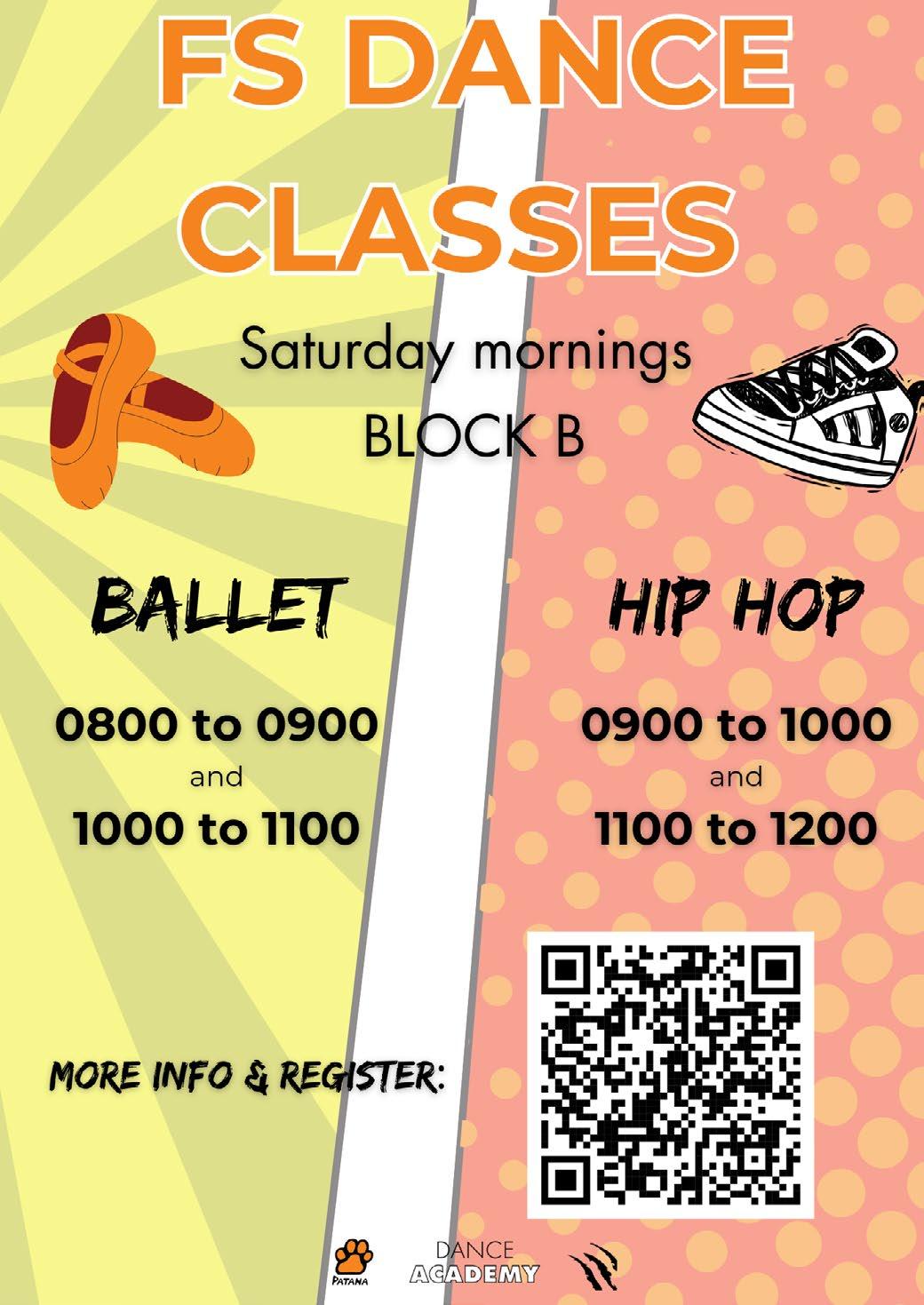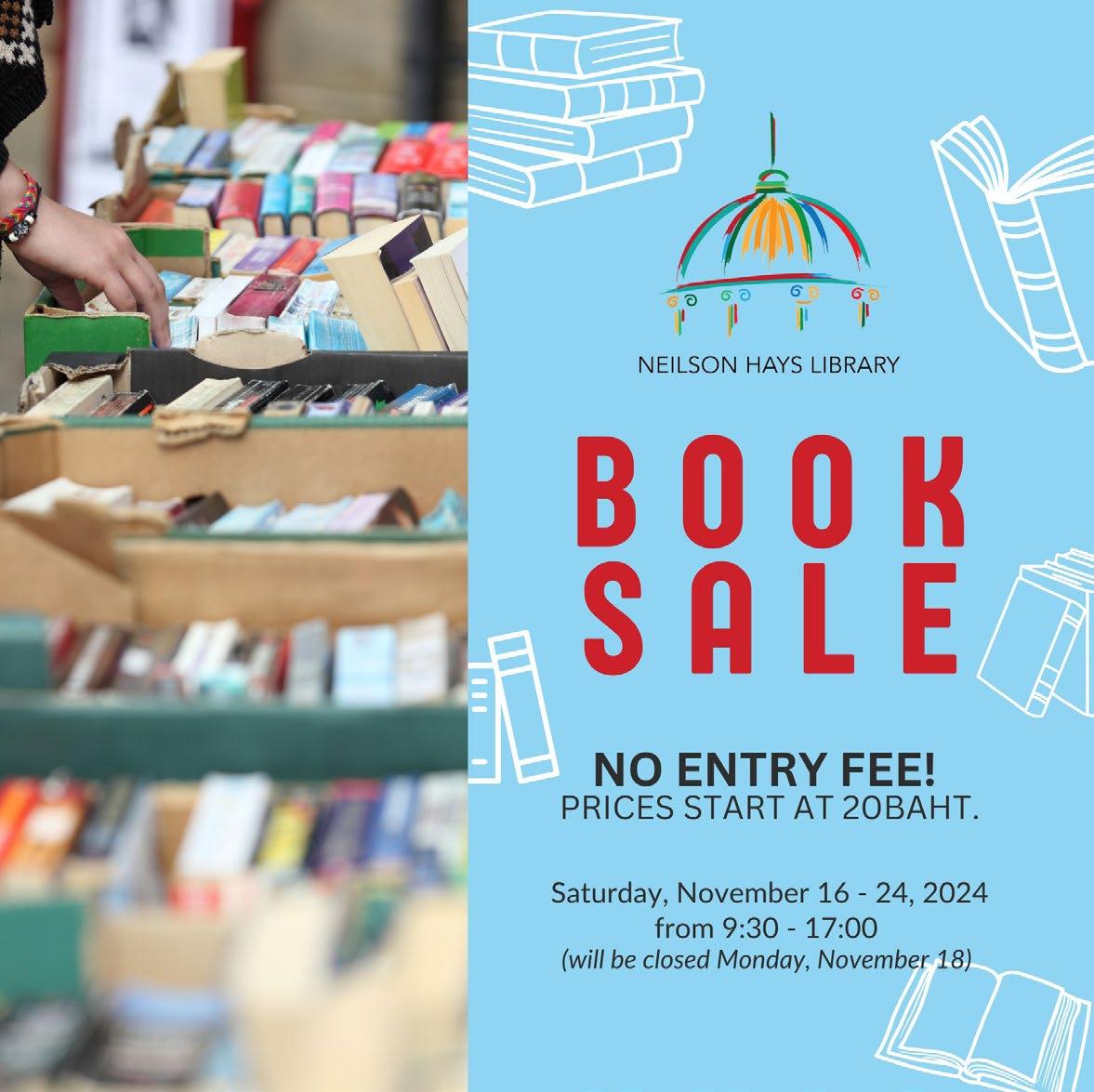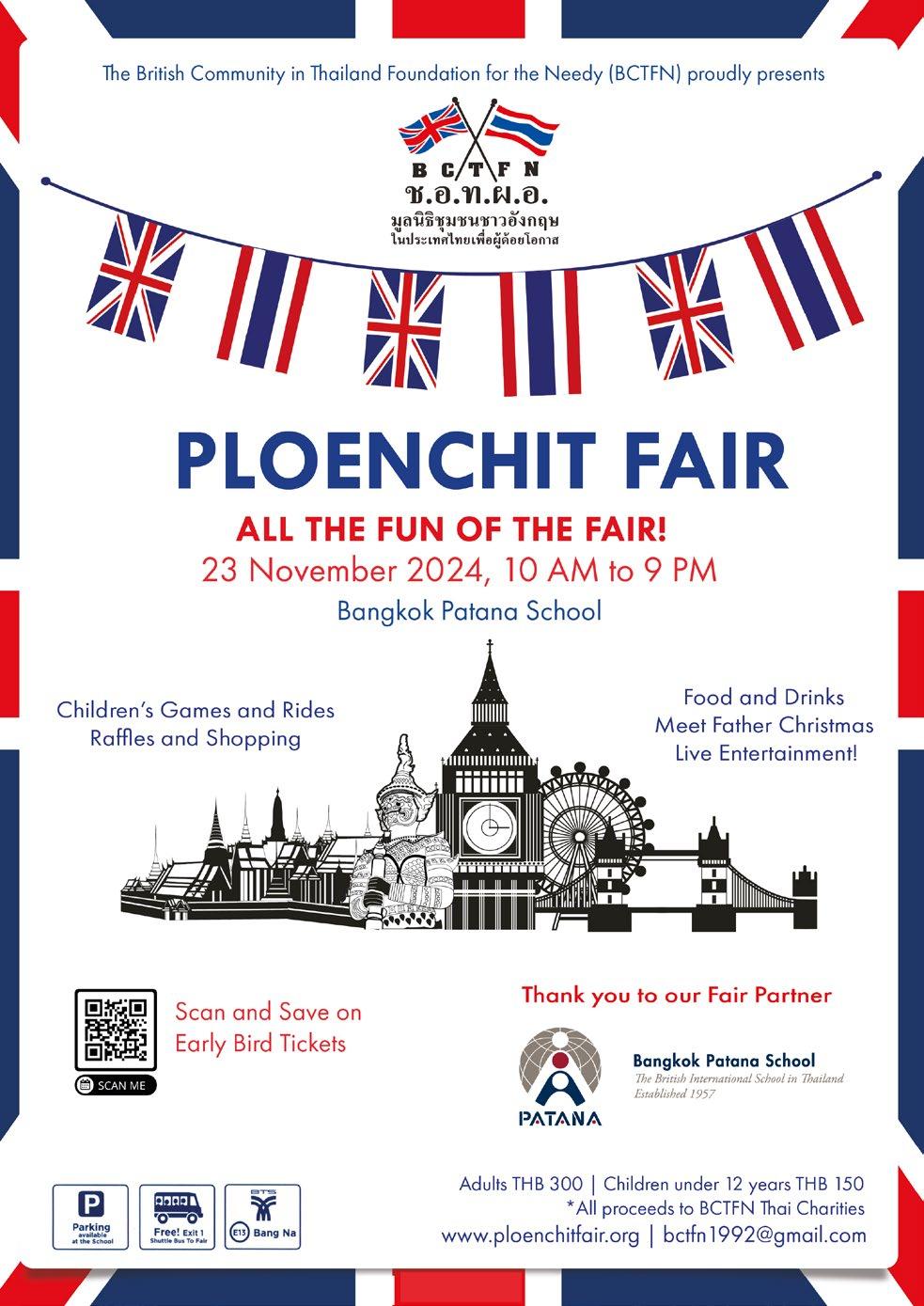
By RichaRd



By RichaRd

Richard Kirtland, Assistant Principal, Inclusion and Welfare
Whenyou think back to your most impactful school memories, I’ll bet they’re not about memorising multiplication tables or mastering punctuation. They’re probably about the time a teacher believed in you when you didn’t believe in yourself, or when you finally found your tribe in the classroom – that time you felt you really belonged. These powerful moments of connection and personal growth aren’t just happy accidents. They’re the result of what educators call Social-Emotional Learning (SEL).
Now, before you wonder if we’re getting too soft on academics, let me share something fascinating: for many years now, the research has clearly shown that strong emotional intelligence is as crucial for life success as traditional academic abilities. In fact, they’re inseparable.
In the Primary School, SEL isn’t just a separate subject or an add-on program (although the PSHE curriculum aims to build on the SEL-work which is threaded through our everyday curricululum). It’s woven into the fabric of our everyday school life, much like our core values of being Safe, Curious and Kind.
When your child works through a challenging math problem with a classmate, they’re not just learning algebra – they’re developing empathy, communication skills and emotional regulation. When they participate in class discussions, they’re practicing active listening and respectful disagreement. When they give feedback on each other’s work, they’re learning to balance honesty with compassion and building the emotional vocabulary to express themselves clearly.
The magic happens in these everyday moments. For example, watch a group of students tackle a complex project and you’ll see our values in action: they’re feeling safe enough to share ideas, showing curiosity about different perspectives and demonstrating kindness in their interactions. It happens across all aspects of our curriculum. During a history discussion about conflicting perspectives, students might practice empathy by considering multiple viewpoints. In science, they learn persistence and emotional regulation when experiments don’t go as planned. In literature circles, they develop social awareness by discussing characters’ motivations and choices.
These moments aren’t separate from academic learning – they enhance it. It’s emotional intelligence growing in real-time.
To put it simply: Social-emotional learning is the bedrock of well-being. Why? Because when children understand their emotions and can relate to others’ feelings, they build stronger connections. And in a world where loneliness and anxiety are increasing exponentially among young people , these skills aren’t just nice to have – they’re absoutely essential.
Being Safe, Curious and Kind provides the perfect framework for this learning:
• Safety creates the emotional space needed to take risks and be vulnerable.
• Curiosity drives students to understand themselves and others more deeply.
• Kindness guides them in applying their emotional intelligence to build positive relationships.
Time and time again we see first-hand how students who feel emotionally secure and socially connected are more ready to engage with challenging academic material by more likely to ask questions, take intellectual risks and persist through difficulties.
And these aren’t just skills for today’s classroom – they’re the essential tools our children will need in a tomorrow where AI reshapes industries overnight, where careers we can’t yet imagine await them and where change happens at lightning speed.
Looking ahead, we’re continuing to refine how we integrate SEL into every aspect of school life, as well as how we monitor student well-being and nurture its growth.
By teaching these skills alongside traditional academics today, we’re not just preparing students for further education and work – we’re preparing them to flourish in life itself.
Surely, those are the most important lessons of all.









In a brilliant display of musical talent, Patana’s first-ever Pianos at Patana event took place just before the halfterm break, providing a platform for the school’s talented pianists to shine. Held on the evening of October 16th on the Theatre stage, this 90-minute invitational piano recital was an extraordinary celebration of the diverse musical abilities across all Year groups from Primary and Secondary schools.
The event saw a wide range of musical genres represented, from classical masterpieces to contemporary and jazz classics, as students showcased their musical skills in front of an appreciative audience. The performers, who were selected through a video audition process, demonstrated exceptional musicality and supreme technical control, with each piece adding a unique flavour to the programme.
“The skills on display were absolutely stunning. I am so proud of our students,” said one of the event organisers,
Mr David Place, who was thrilled by the high level of performance. The evening truly highlighted the depth of talent within the school community, offering an opportunity for piano players to share their passion and dedication to their craft.
The programme featured pianists from across the school, with efforts made to include at least one performer from each Year group. This inclusive approach ensured that students of all ages had a chance to be part of the special evening, reflecting Patana’s commitment to nurturing talent in all forms of music.
The success of Pianos at Patana has ensured it will become a regular feature of the school’s music calendar. Congratulations to all the performers for their hard work and dedication!





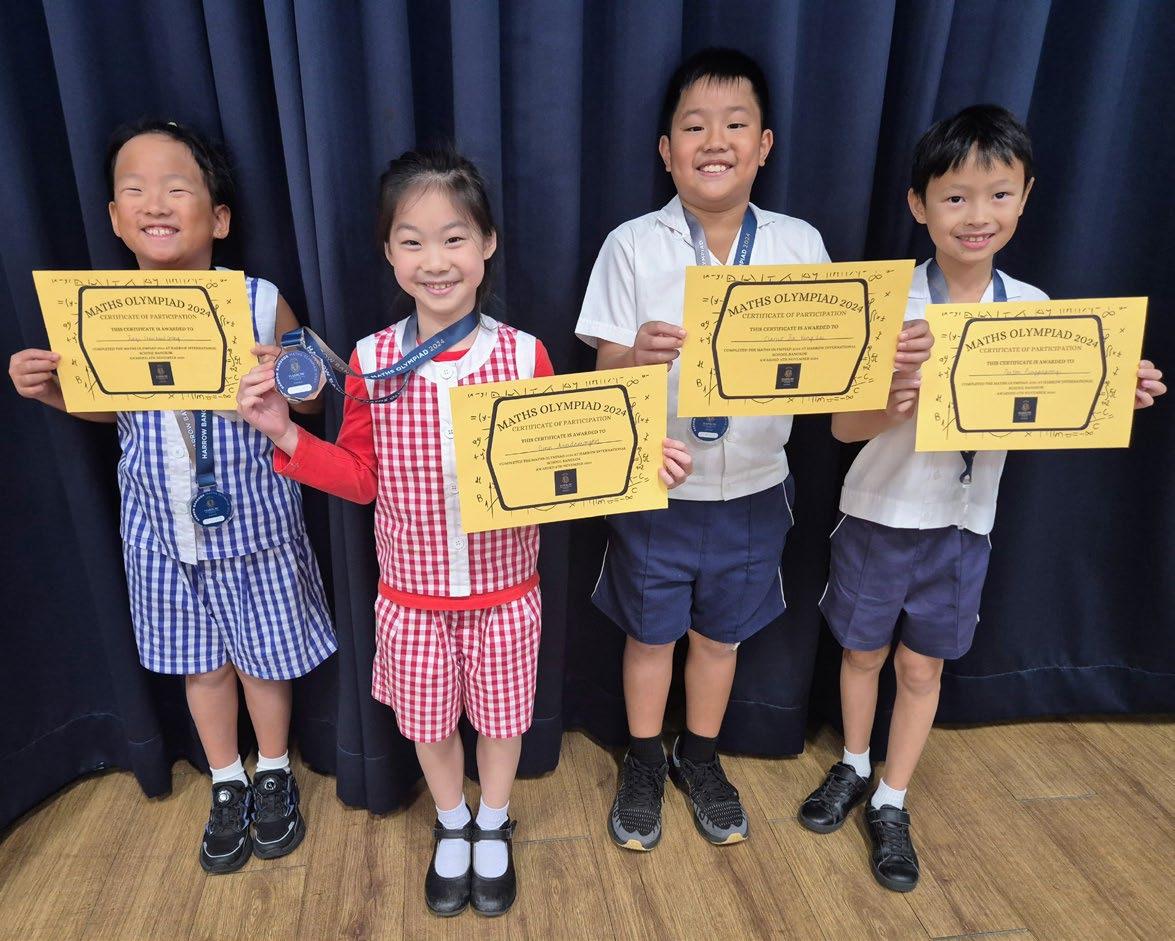
OnFriday 8th November, a team of four Year 4 students represented Bangkok Patana School at a Maths Olympiad, held at Harrow International School. The event brought together bright young minds from across Bangkok, all eager to tackle a day of puzzles and problem-solving.
The day was filled with engaging activities designed to test teamwork and mathematical skills, beginning with a competitive timed segment where each team had to solve a challenging multi-step puzzle. Our Year 4 mathematicians showcased impressive collaboration and perseverance throughout this task and we are incredibly proud that they earned second place in this intense segment. Along the way, many of the teams in attendance also learned an invaluable lesson: always double-check your answers to
avoid small, but costly, mistakes!
Later in the day the students tackled tricky challenges involving magic triangles, delved into codebreaking mysteries, and attempted to construct specifically-sized cubes with nothing more than some paper, scissors, a ruler and some quick calculations! These activities provided a unique opportunity for our team to apply their maths knowledge in creative and complex ways. One interesting question from the event has been included here for our readers –how would you approach solving it?
Congratulations to our Year 4 representatives for their outstanding performance and the resilience they displayed throughout the Olympiad.


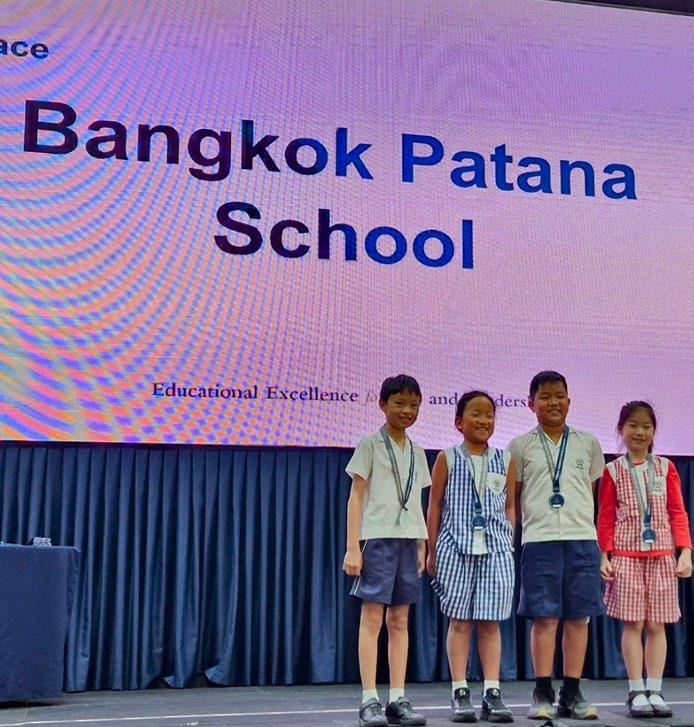

As part of their Creativity, Activity and Service (CAS) programme the whole of Year 12, a total of 142 students visited Nakhon Nayok Wittayakhom School during their residential week in order to deliver engaging, exciting and educational lessons to the students there.
Our students worked in their CAS classes to investigate suitable learning activities, plan their lessons and prepare resources. Their lessons focused on either fun science experiments, creative art and crafts, English conversation or Physical Education (PE). In terms of aims, the learning outcomes were clear for all involved: to develop intercultural understanding and develop skills in communication and collaboration. Our students also got the chance to take on leadership roles in the planning and initiation of activities, while the students at the host school gained some practice in English and were also given a chance to challenge themselves and engage in different ways to learn.
To what extent were these aims met? Let’s hear the reflections of a few of the students involved.
“I learned how to interact with people when there was a language barrier and I think that the lesson went well as the kids had fun and were learning. Overall, I enjoyed

going to the school as I learned a lot about the kids and made some new friends.” Annabel
“Overall, this experience really helped me improve my organization, communication and social skills and I thought it was really helpful to me and the students. Most importantly it was fun and it felt good to give acts of kindness.” Nicholas
“I was really excited to work with younger Thai students and I made really strong connections at the end. The children gave us feedback and said they understood well and enjoyed the activity. It was a real eye opener for me to see a local Thai school and I realised we have a lot in common.” Elsie
“It was sad to say goodbye to the students as we all bonded very well, but I’m glad to have been able to be involved in making these students happy and excited from these new experiences.” Emily
“It wasn’t just about the games themselves—it was about the connections we were building and the joy we were creating together. Every small action counts and today was a powerful reminder of just how meaningful those actions can be.” Yoochan








Jayne Jauncey, Leader of Primary Physical Education
A WEEK OF ATHLETIC ACHIEVEMENTS AND TIGER SPIRIT!
As secondary students embarked on their annual week-long residentials, our primary students proudly took centre stage at Patana School’s annual Primary PE Sports Days. The week was a true celebration of athleticism, teamwork, and Tiger Spirit.
Kicking off the events were our Year 5 and 6 students, the oldest in primary, who showcased remarkable athletic prowess in a mix of throwing, running, and jumping activities. From the dizzy heights of high jump to the long strides of long jump, our students exhibited fantastic power, speed, and control. One of the standout events was the adventure run, where students dug deep into their energy reserves to conquer obstacles with determination and grit.
On Tuesday, our Year 3 and 4 students took the spotlight, building on their recent athletics fundamentals unit. Events such as hurdles highlighted their agility and coordination, with many students collecting the maximum 4 points for their classes through a powerful combination of speed, running, and jumping. This year we also introduced
the Individual Tiger Spirit Award, this award was given to students who demonstrated qualities beyond the sports field, like kindness, resilience, and humility. It was inspiring to see so many students recognised for embodying these values throughout the event.
The week culminated with our youngest athletes in KS1, as Year 1 and 2 students tackled events such as; obstacle courses, basketball shooting, sprints, javelin throws, and three-spring jumps. The sports hall buzzed with energy, smiles, and laughter as these students gave their all in every activity, happily showcasing their learning and enthusiasm.
A special thank you to all the parents who came to support, creating an electric atmosphere and cheering on our young athletes.
We look forward to even more exciting events throughout the year! For students in Years 4-6 who are eager to break school athletic records, mark your calendars for Saturday, 11th January when the Athletics Record Breakers event will take place. More details coming soon!



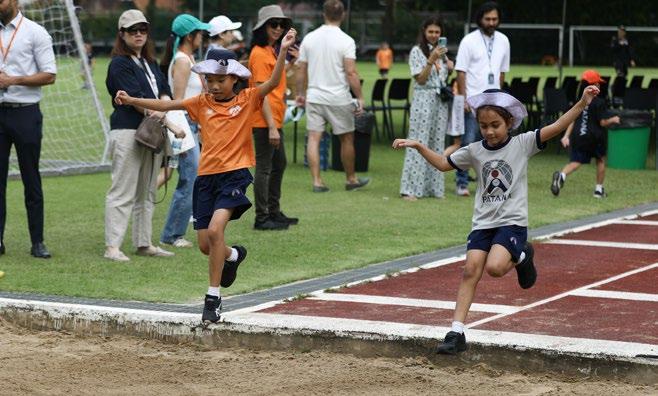


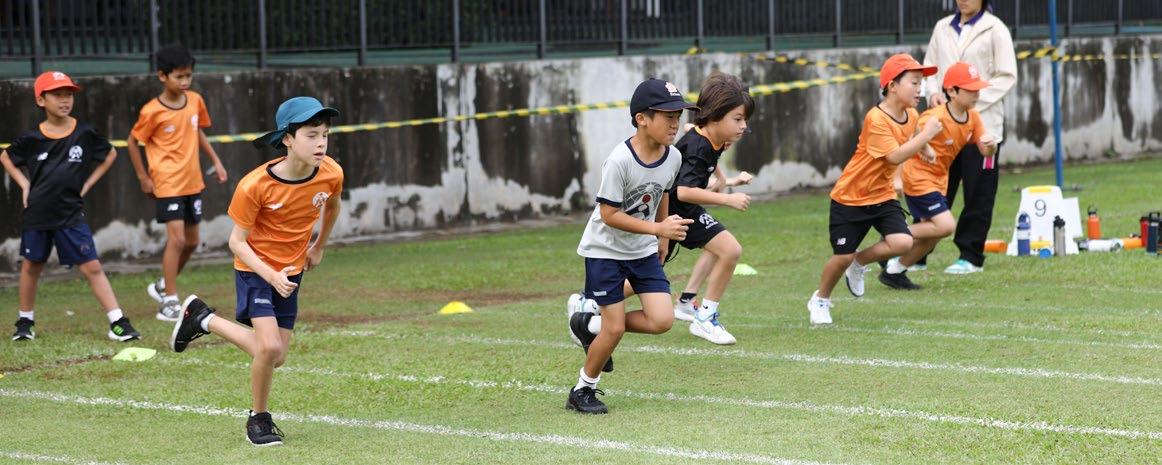
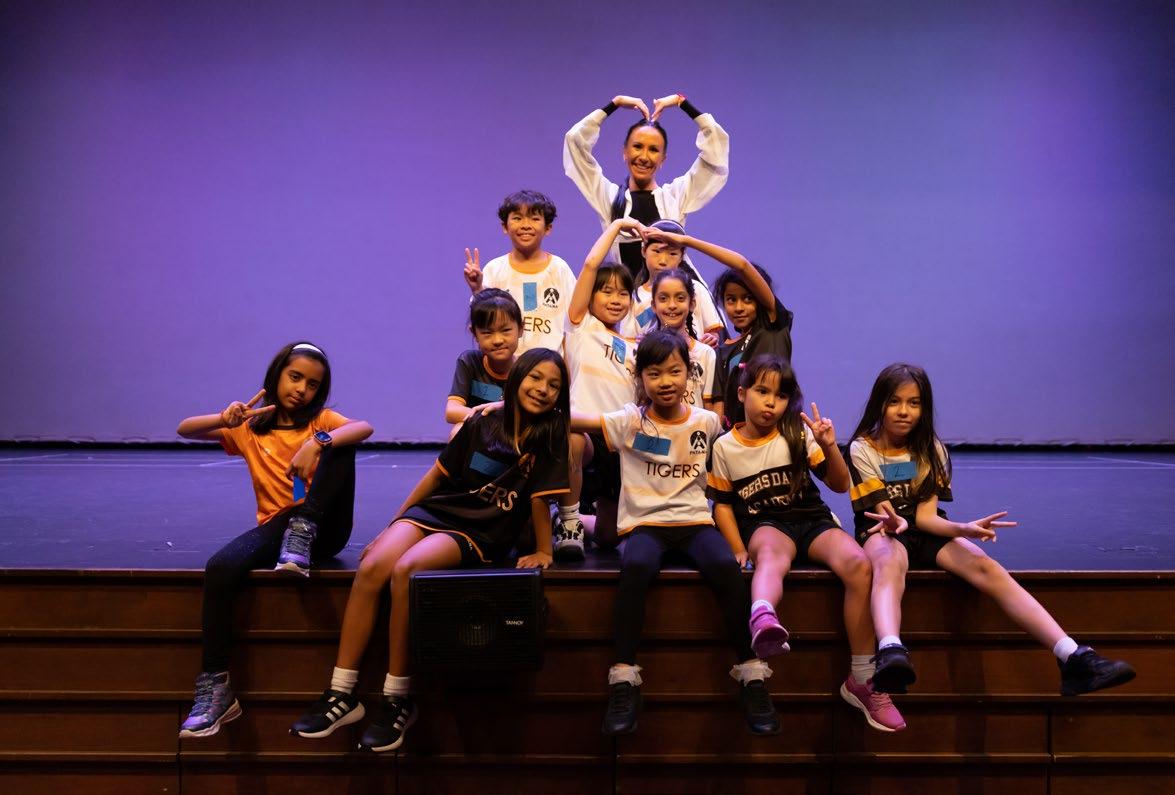
FEST 2024 was an exciting, action-packed day filled with fun, creativity and plenty of new experiences! Students from Year 3 to 13 had the chance to explore a variety of dance styles through workshops led by three professional guest artists and our own Coach Sarah. The sessions included Contemporary with Boon Wangpaisan, Theatre Jazz with Tim Fournier, Dancesport with Anzhela Kuryshova, and I led a session on Choreography. Our guest artists, each with a rich international background, inspired our dancers with their energy, expertise, and passion for performance. The routines shared were dynamic and challenging, pushing students to refine their technique, develop expression and, at times, go beyond the movements themselves to create meaningful, connected performances.
Contemporary dance emerged in the mid-20th century as a break from the rigid structure of classical ballet, blending elements of ballet, modern, jazz and even commercial styles like hip-hop. It prioritises freedom of movement, emotional expression and experimentation. In his workshop, Boon guided students to explore these concepts firsthand, focusing on techniques like working with gravity, suspension and contraction. His approach to
Contemporary dance, which incorporates grounded, fluid and improvisational elements, was an eye-opener for many. Boon, with his captivating fluidity, inspired dancers not only with his movement but with his unique teaching style. He encouraged students to move beyond technical perfection and embrace a more somatic approach, connecting deeply with their bodies and the emotions behind the movement – an exciting and new perspective for many.
Theatre Jazz blends the vibrant energy of jazz dance with the flair of Broadway and musical theatre. Emerging in the early 20th century, it evolved alongside vaudeville and theatrical productions, influenced by African American jazz, tap, and ballet. Characterised by sharp, staccato isolations and high-energy kicks and turns, Theatre Jazz demands both technical precision and dramatic expression. Tim brought this to life in his workshops, teaching choreography set to iconic jazz pieces like ‘New York, New York’, famously sung by Frank Sinatra, and ‘Sing, Sing, Sing’ from the musical revue ‘Dancin’’. These routines pushed students to showcase both strong technical skills and energetic, theatrical performance. Our older students were introduced to a distinctive jazz technique inspired by Bob Fosse – a favourite choreographer of mine – blend-


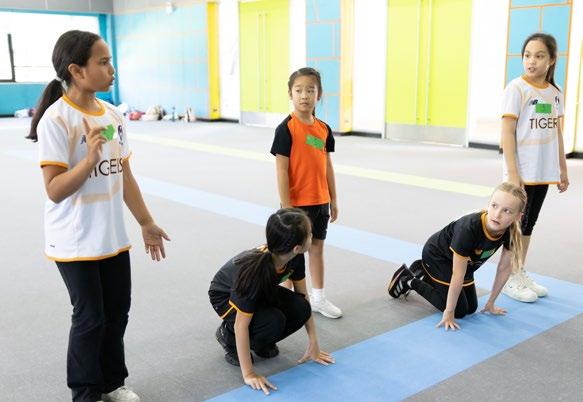




ing isolations with sharp, angular lines. Meanwhile, our Year 3 and 4 students had their own moment to shine, impressing with their performance of the iconic group jazz walk, kicking their way forward to enthusiastic applause!
Dancesport refers to competitive ballroom dancing, encompassing both Latin and Standard styles such as the Tango, Waltz, Cha-cha and Jive. It emerged in the 20th century as a formalised version of social dance, emphasising precision, posture and perfect synchronisation between partners. Dancesport incorporates a wide range of technical movements, including quick footwork and exacting turns. These elements were on full display in the fast-paced, high-energy routines Anzhela led during her workshops. For the younger students, Anzhela demonstrated the focus and energy required to master the Chacha’s unique rhythm and hip action. Meanwhile, the older students were challenged by the rapid footwork, bounce, swings and kicks of Jive, working up a sweat as they finetuned every detail. Throughout the workshops, Anzhela’s power, dynamic presence and passion for dance shone brightly, illustrating not only the demands of Dancesport
but the dedication and vitality required of any serious dancer.
Choreography is the art of creating and arranging dance movements into structured sequences that convey ideas or emotions. Choreographers may use style-specific vocabulary, blend movement elements from various dance styles, or even create uncodified movements to express their unique vision. In my workshops, I focused on the latter, encouraging students to step beyond familiar, codified movements and embrace a sense of playfulness and freedom in their dancing. Using choreographic devices such as imagination, improvisation and open-ended questioning she inspired students to think outside the box, using their own creativity to explore movement in new ways. Groups performed finished sequences of their own making demonstrating interesting, innovative and, at times, comical choreography. Choreography gives students the opportunity to apply what they’ve learned in any dance style to showcase their individuality and express themselves artistically. These are qualities that we, in the Dance Academy deeply value and that are essential for devel-

oping well-rounded, skilled dance performers.
An afternoon showcase not only gave dancers the opportunity to demonstrate the skills and techniques they had learned throughout the day, but also allowed parents to witness their children’s creative and learning processes. Observation was a valuable experience for all our students, too: younger dancers were inspired by the performances of their older peers, seeing the potential for their own future dance journeys, while the older students had a chance to reflect on how much they had grown and developed. Parents, staff and students all enjoyed seeing the behind-the-scenes elements of creating dance pieces, as our guest artists recapped and marked through routines with the dancers on stage. With the final call of ‘lights, camera, action!’, students were able to take full ownership of their journey and shine in on-stage performances, bringing everything they had learned to life!
But the excitement didn’t end there – oh no! As a final treat for everyone, our incredible Dancesport guest artist Anzhela Kuryshova and her phenomenal dance partner, Slavik Samokhin, showed us exactly how it’s done. They gifted us with a nearly 10-minute, non-stop professional performance, showcasing their brilliant chemistry as a dynamic duo. Their performance seamlessly flowed through three different styles – Cha-cha, Rhumba and Jive – demonstrating the full range of Dancesport. Their jaw-dropping stamina and extraordinary performance skills left us all in awe! Staff, students and parents alike couldn’t contain their excitement, ending the day with cheers, applause and a deep sense of inspiration.
The event was described as the ‘best day ever’ by one student, and the Dance Academy team are already looking forward to Dance Fest 2025…!

If you require documentation from the School to support visa applications or extensions over the Christmas break, please request this as soon as possible.
Please complete the request form via the Parents’ Gateway allowing 3 working days : Document Request from Admissions (patana.ac.th)
Please note that the last date to submit requests this term will be Monday 9th December 2024. Requests received after this date will be processed from 6th January 2025 onwards.
If you have any questions, please contact parg@patana.ac.th
The School Shop and Post Office will be closed from 16th December 2024, and will reopen on 6th January 2025.
If your child (Year 9,10 or 11) studies a language outside of school, either a Home Language or a Foreign Language, and would like to consider taking an (I) GCSE exam in that language this academic year, do contact Celine Courenq, Head of Faculty World Languages (ceco@patana.ac.th) before the 6th December.
In your email, please include:
- the full name of your child
- his/her tutor group
- the language they wish to be entered for
- the syllabus code of the exam (for example ‘Cambridge IGCSE ChineseSecond Language (0523)’)

If you have any areas of technology you would like me to talk about in these videos then please add a comment in the video or contact me directly on brta@patana.ac.th.

0:00 #1 Access Down Dog fitness apps for free using your child’s Patana email address and this link: Down Dog | Great Yoga Anywhere
1:19 #2 Travelling abroad and don’t want to buy a new SIM? Try Airalo: https://www.airalo.com/
2:21 #3 Name that bird - become an avian expert! https://merlin.allaboutbirds.org/
Have a great weekend. Brian Taylor Vice Principal, Technology for Learning

